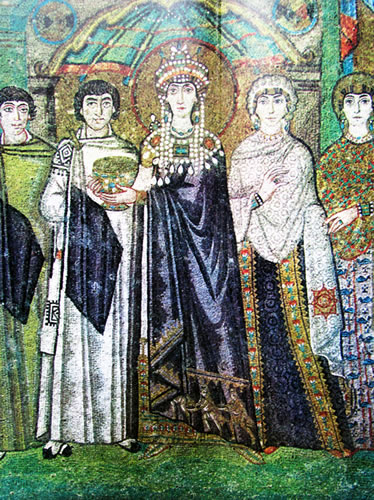The Fabulous Mosaics of Ravenna - A Talk by Hendrika Foster
 Art Historian Hendrika Foster has chosen for her next illustrated talk the fascinating story of the mosaics of Ravenna. This Italian city was the scene of the fading of the Roman Empire, its capture by the Ostrogoths and the triumph of the Orthodox Emperor Justinian and his beautiful and controversial queen Theodora.
Art Historian Hendrika Foster has chosen for her next illustrated talk the fascinating story of the mosaics of Ravenna. This Italian city was the scene of the fading of the Roman Empire, its capture by the Ostrogoths and the triumph of the Orthodox Emperor Justinian and his beautiful and controversial queen Theodora.
The early mosaics of Ravenna are amongst the most stunningly beautiful and unusual artworks in Italy, a country rich in great art, and the stories they have to tell are amazing also. Richly illustrated as always and told in her own inimitable style, this Wincanton and District Museum and History Society lecture by Hendrika Foster is one not to be missed.
Friday 27th April at 7.30pm in the Balsam centre Wincanton. £5.00 entry and free for members.
Here you see the Empress Theodora, in her day one of the most powerful women in the world and with a story to make Berlesconi blush.

Comments
Posts: 1
Reply #1 on : Sat April 28, 2012, 18:46:12
Login to comment!